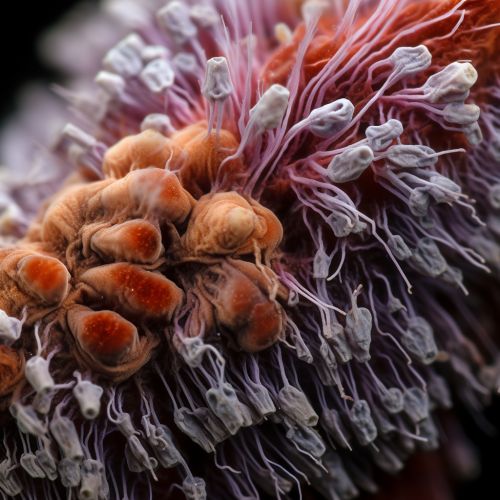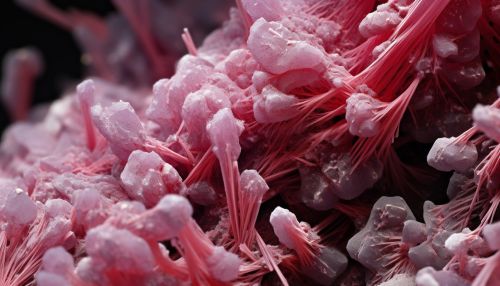Agrobacterium
Introduction
Agrobacterium is a genus of Gram-negative bacteria that are known for their ability to transfer DNA between themselves and plants. This process, known as horizontal gene transfer, is unique among nature and has been harnessed by scientists for the genetic modification of plants.
Classification and Characteristics
Agrobacterium is a member of the family Rhizobiaceae, which also includes the genera Rhizobium, Sinorhizobium, and Allorhizobium. These bacteria are characterized by their ability to form symbiotic relationships with leguminous plants, leading to the formation of root nodules where the bacteria fix nitrogen for the plant.


Agrobacterium species are rod-shaped, non-spore-forming, and motile due to the presence of peritrichous flagella. They are also facultative anaerobes, meaning they can grow in both the presence and absence of oxygen.
Pathogenicity and Disease
Agrobacterium species are best known for their ability to cause plant diseases. The most well-known of these is crown gall disease, caused by Agrobacterium tumefaciens. This bacterium induces the formation of galls, or tumour-like growths, on the stems and roots of infected plants.
Another significant disease caused by Agrobacterium is hairy root disease, which is caused by Agrobacterium rhizogenes. This bacterium induces the formation of proliferative, hairy-like roots at the infection site.
Mechanism of Infection
The pathogenicity of Agrobacterium is due to its ability to transfer a piece of its own DNA, known as the T-DNA, into the plant cell. This process is facilitated by a series of virulence genes located on a plasmid within the bacterium, known as the Ti (tumour-inducing) or Ri (root-inducing) plasmid.
Upon infection, the T-DNA is integrated into the plant's genome, where it is expressed and leads to the formation of galls or hairy roots. The T-DNA also contains genes that lead to the production of opines, a class of compounds that can be utilized by the bacterium but not by the plant.
Agricultural and Scientific Significance
The ability of Agrobacterium to transfer its DNA into plants has been harnessed by scientists for the genetic modification of plants. This process, known as Agrobacterium-mediated transformation, is widely used in plant biotechnology for the introduction of new traits into crops.
In addition to its use in genetic engineering, Agrobacterium also has significant implications for agriculture due to its role in causing plant diseases. Control of Agrobacterium diseases is therefore a significant area of research in plant pathology.
